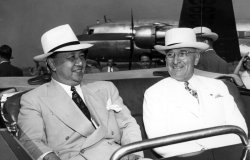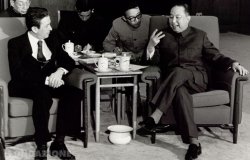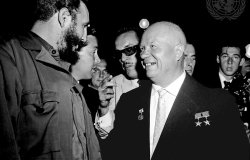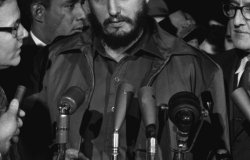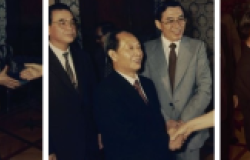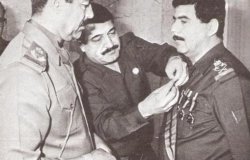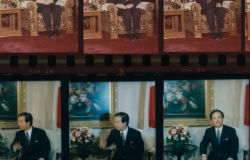
A blog of the History and Public Policy Program
Silencing the Archive
How oral history interviews can reveal gaps and distortions in written records

How oral history interviews can reveal gaps and distortions in written records
This post is an excerpt from an article by Anca Șincan, "Silencing the Archive – A Methodological Insight into the Research for the Study 'A Day in the Life of an Inspector for Religious Denomination,'"Anuarul Institutului de Cercetări Socio-Umane "Gheorghe Şincai,"Tîrgu-Mureş, XV/2012, pp. 144-155.
Working on the relationship between the state and the church in communist Romania… I have looked at the ministry and local inspector for religious denominations (împuternicitul de culte) the intermediary between the state and the religious community. This type of state functionary was transferred from the Soviet experience in the politics of administration, surveillance and control over religious denominations to the rest of the communist bloc.[1] The inspector for religious denominations is both in the Soviet and the Romanian case the last link of the newly designed relationship between the communist state and the religious denominations, responsible with implementing state policy, the first and in most cases the only Ministry representative available at a local level. He is the person with whom the clergyman “negotiates” his position, requests, needs, conflicts.2 Invested with authority over the religious communities he was supervising the inspector mediates a complicated relationship where he is at the same time insider/outsider, controlling and controlled in a complicated entanglement that made him (but also his superiors or the subjects of his supervision) question his own communist (and, at times, religious) orthodoxy. […]
Researching the apparatus of control and the response of the Romanian Orthodox Church and other religious denominations to its regular interferences in their administrative decisions at various levels I have used mainly documents from the Archives of the State Secretary for Religious Denominations. These Archives have the largest collection of documents pertaining to the corpus of inspectors. They held the results of the apparatus of inspector’s field work, the rules and regulations developed by the centre – the Ministry and later the Department, and various other legislative bodies. […]
The period in focus was the late 1940s and early 1950s when the profile of the state functionary at a local and regional level was structured and the response of the religious denominations to this intrusion of the ministry into their life started to develop, the mechanism of negotiation, response, protection become manifest. Also this is the period when the position of the inspector in the communist cadre system changes from one that is available to the insider,[2] cadres selected from and connected with the religious denominations to one almost exclusively available to the outsider, those communist specialists formed by the state to take over the activity of supervision and control.
One other reason I looked into this first decade of the communist regime was related to the archival document. During the research period I found that tracking the relationship between the ministry personnel and the members of the religious communities in the archive materials was easier in the early stage of the communist period. In the first decade of the communist regime the documents that the local inspectors drafted during their daily activities were richer in information, more detailed, trying to completely respond to the requests coming from the ministry. The documents become rather standardized after a period of adjustment for the newly employed ministry personnel. Starting from the late 1960s the documents contain standard formulae, the inspectors anticipate the requests and the ministry’s response to their paperwork and make efforts to prevent any action that the centre might take in response to their work. There were inspectors who wrote their summaries of the meetings with various members of the church, the minutes of the priest conferences for instance, before those meetings actually took place.[3] This revealed a routinized relationship between the inspector and the subject of surveillance/investigation, with both sides mechanically aware of the rules and regulations that govern their relationship in the second decade of the Romanian communist regime.
I called this the silence of the archives. It was discovered after going through the reports related to one issue – the supervision of the priests’ conferences by the inspectors for religious denominations along the 1950s and 1960s. Focusing on one particular event in such a conference that I considered important for my research and having the opportunity to meet the author of the report I enquired about it directly. The document and the oral testimony were distinct. The interviewee offered even more when describing the process of reporting to the centre (in this case the Department for Religious Denominations inside the Ministry for Internal Affairs). He stated that the reports that did not involve particularities were drafted before-hand and (from the mid-1960s at least) were at best standardized pieces of information. The inspector already knew what the ministry needed to know, what they expected from their cadres and offered exactly that. Only the disruptive events that had the possibility to reach Bucharest in other ways (the religious community could inform its administrative centre, the Securitate cadres could have reported the incident) made their way into the document. And even in these cases an initial attempt for their solution was made at local level. The decision to report or not to report remained at the latitude of the inspector and the document preserved at the archive was thus not just a one sided story (the narration of the inspector, informant, author) but it could easily be a distorted view over the event or a false account of it. Uncovering and contextualizing the document was from the late 1960s only a part of the research. Diversifying the archives to include several sides to the story helped. Thus I have brought in the documents created locally and those created by the church.
For the full article, see Anca Șincan, "Silencing the Archive – A Methodological Insight into the Research for the Study 'A Day in the Life of an Inspector for Religious Denomination,'" Anuarul Institutului de Cercetări Socio-Umane "Gheorghe Şincai," Tîrgu-Mureş, XV/2012, pp. 144-155.
[1] See Otto Luchterhandt, “The Council for Religious Affairs,” in Religious Policy in the Soviet Union, Sabrina Ramet (ed.), (New York: Cambridge University Press, 1993), p. 58.
[2] Due to the lack of specialised cadres the first pool of candidates for the position of inspectors in the ministry was made up of persons that were connected with the religious life in the country (insiders) – defrocked priests, theology students.
[3] David Gheorghe, interview by Anca Şincan, file recorder, Tîrgu-Mureş, January 31, 2006
About the Author

Anca Maria Șincan
Researcher, Gheorghe Sincai Institute of the Romanian Academy

History and Public Policy Program
The History and Public Policy Program makes public the primary source record of 20th and 21st century international history from repositories around the world, facilitates scholarship based on those records, and uses these materials to provide context for classroom, public, and policy debates on global affairs. Read more

